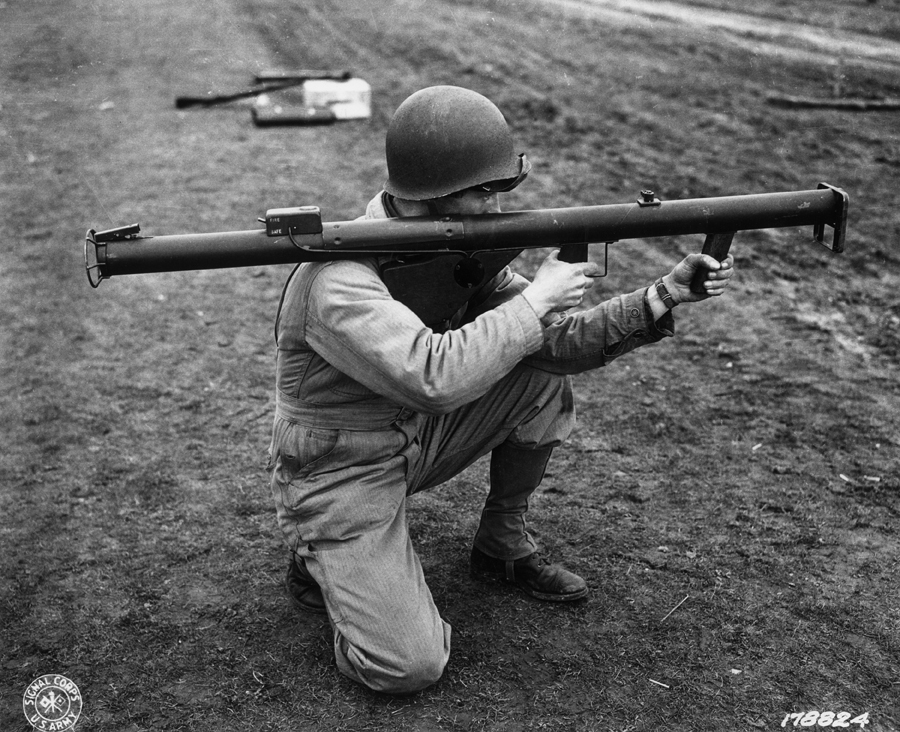Bazooka, << buh ZOO kuh, >> was a small rocket launcher used mainly against tanks, generally at short distances. United States troops used bazookas during World War II (1939-1945) and the Korean War (1950-1953). A bazooka consisted of a metal tube, a shoulder rest, and sometimes a bipod (two-legged support) for steadiness. It required two people to operate—one to load the weapon, and one to aim and fire it, usually from the shoulder.

Rocket launchers called light antitank weapons have replaced bazookas. The U.S. Army’s chief light antitank weapon, the M136 AT4, weighs about 15 pounds (6.8 kilograms) and is 3.3 feet (1 meter) long. It is fired from the right shoulder and requires just one person to operate. The 84-millimeter caliber launcher fires a rocket containing an explosive charge. The rocket can travel up to 2,300 yards (2,100 meters), but it is most effective at ranges of less than 330 yards (300 meters). The charge has a cavity with a metal liner. When the charge explodes, the metal liner forms a jet of high-speed molten (melted) metal. The jet can pierce armor more than 1 foot (30 centimeters) thick.
See also Rocket.
